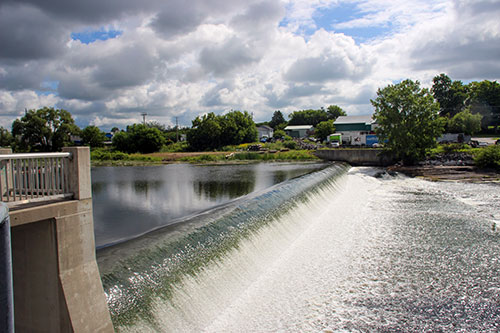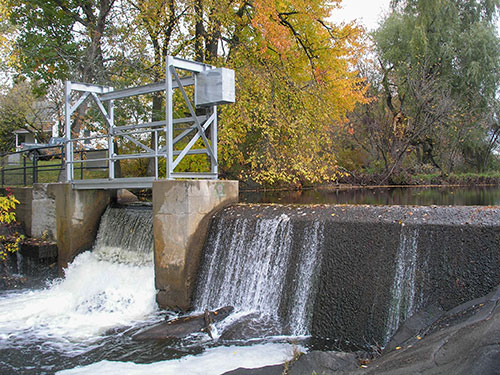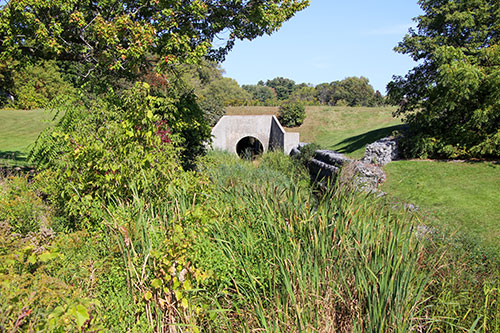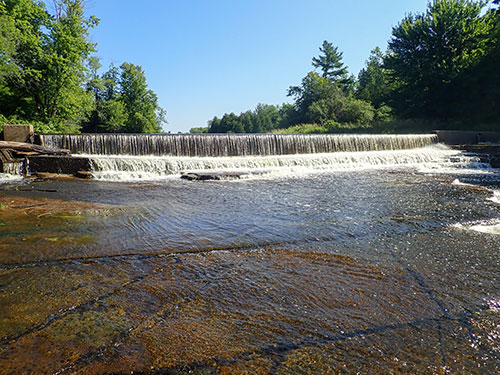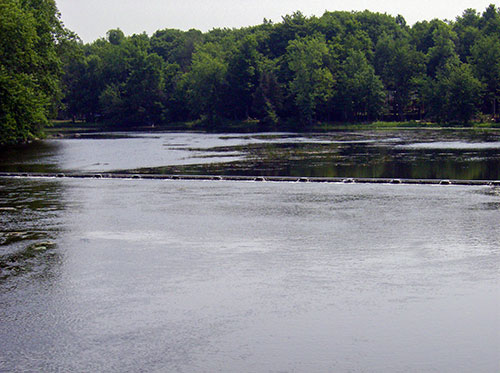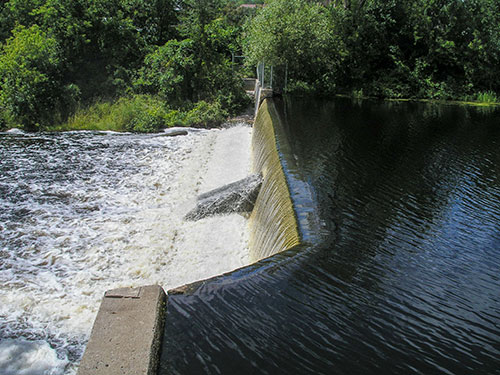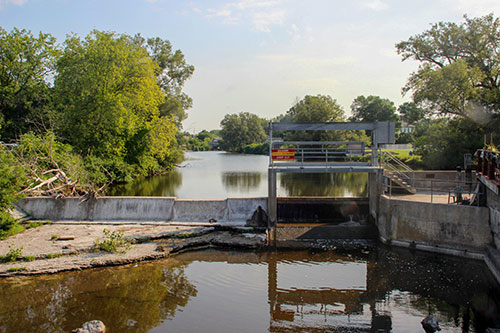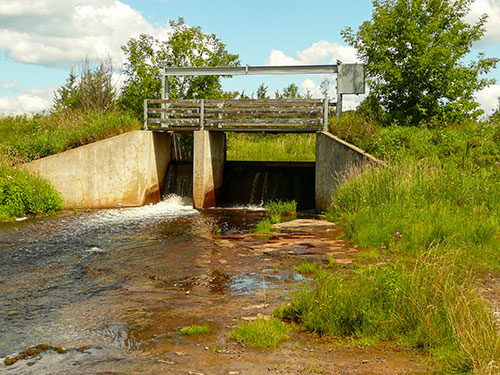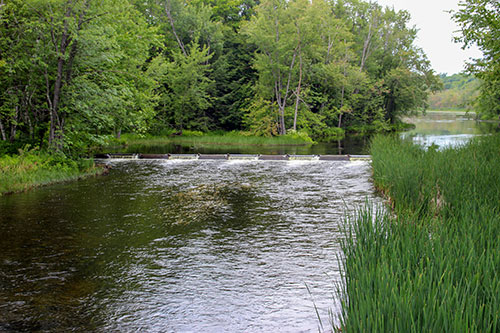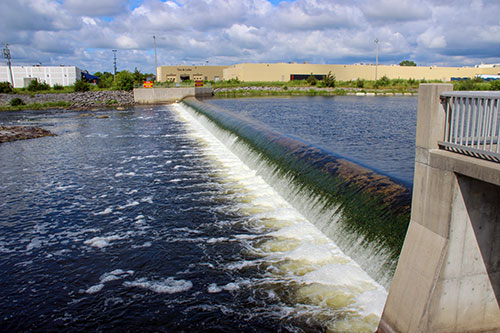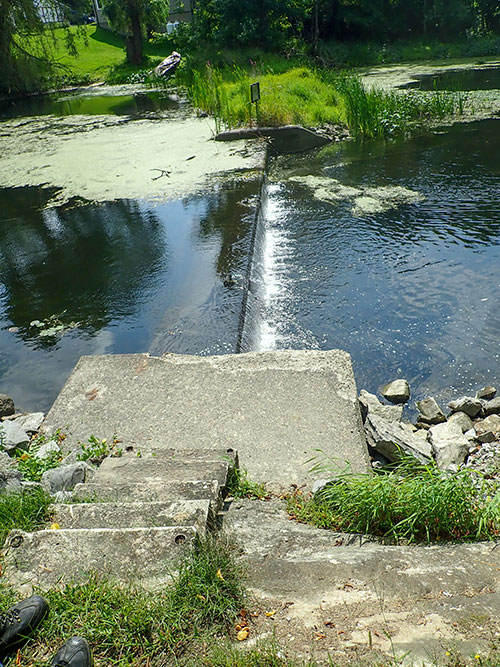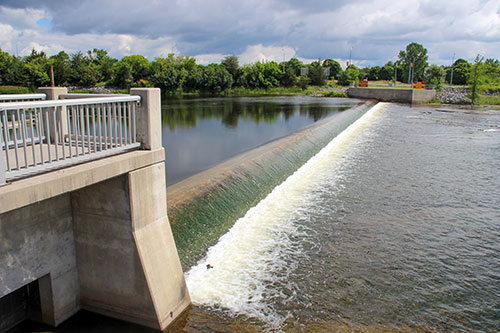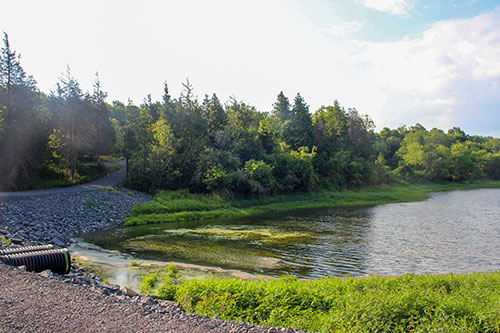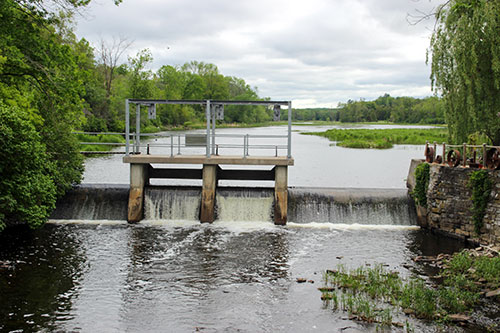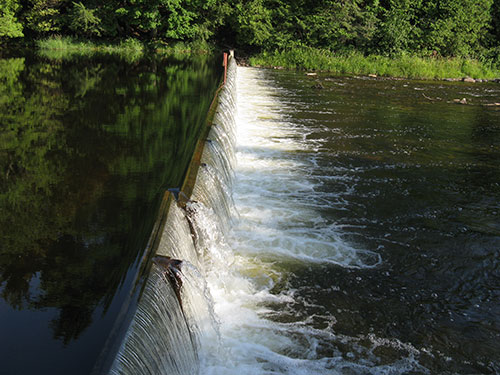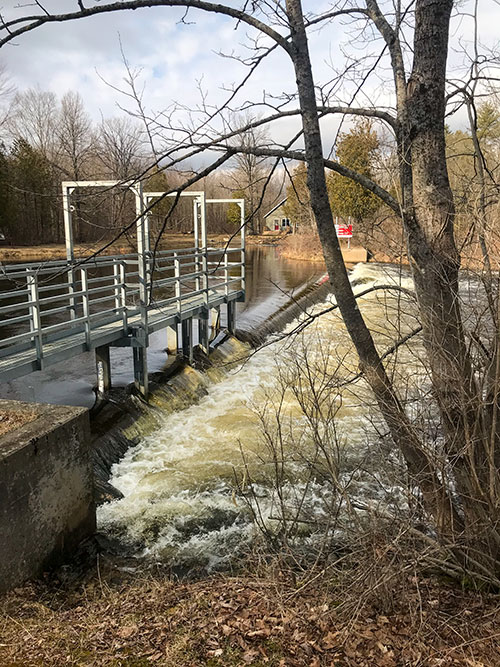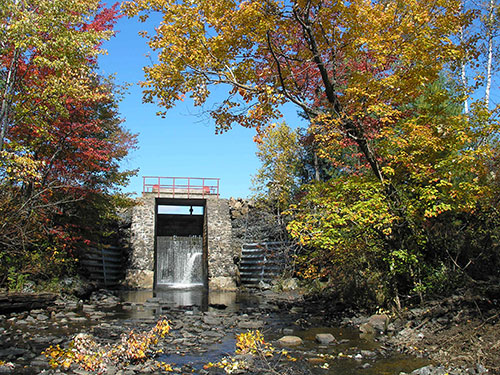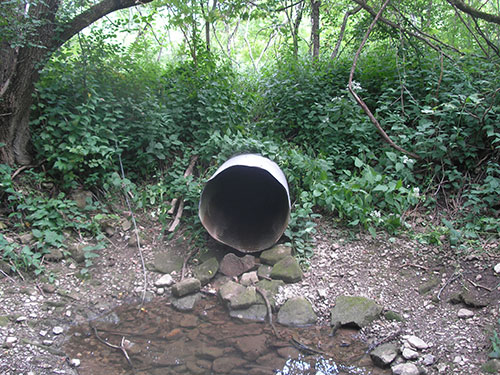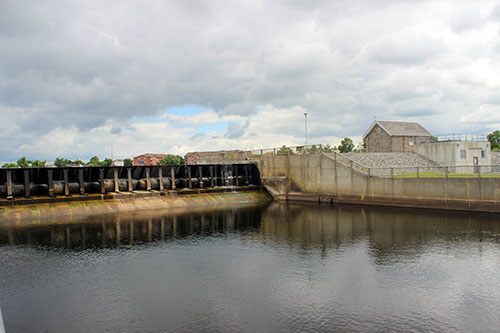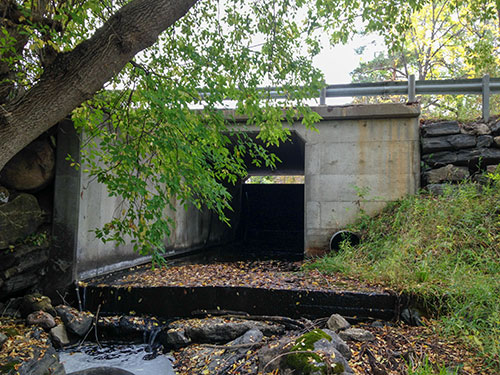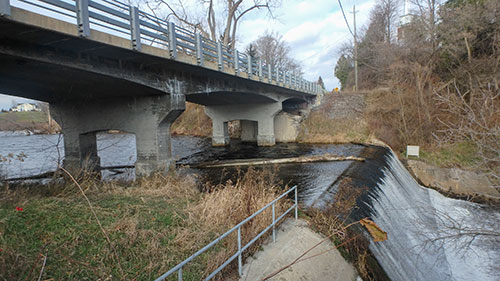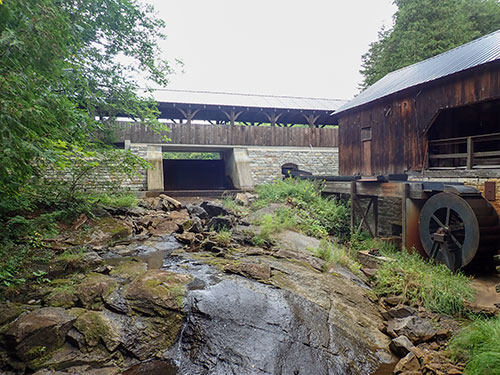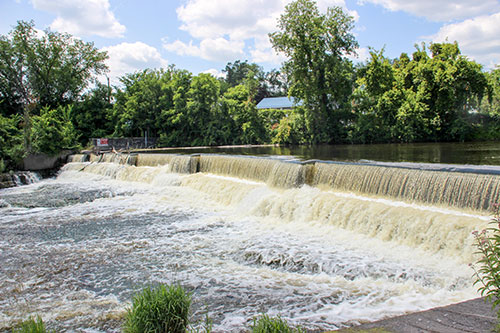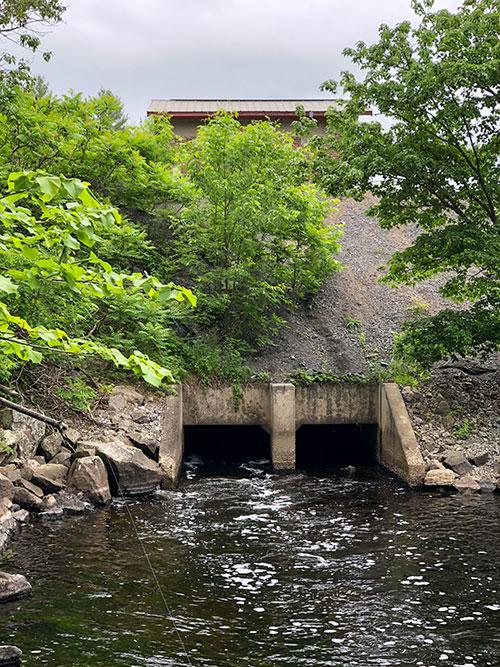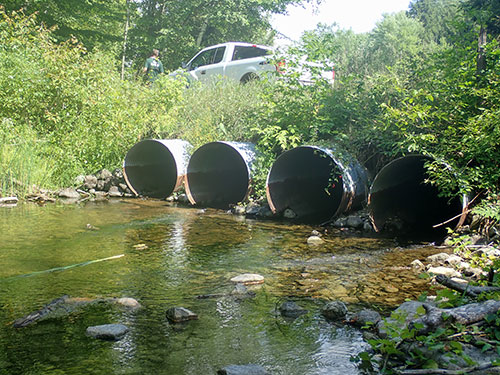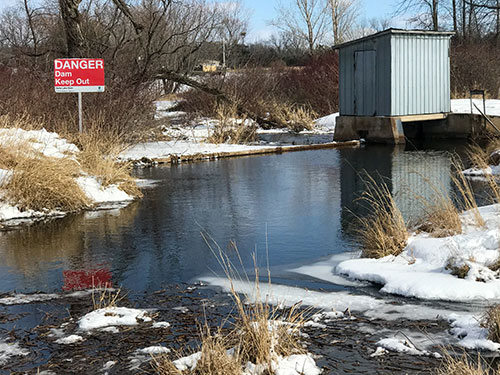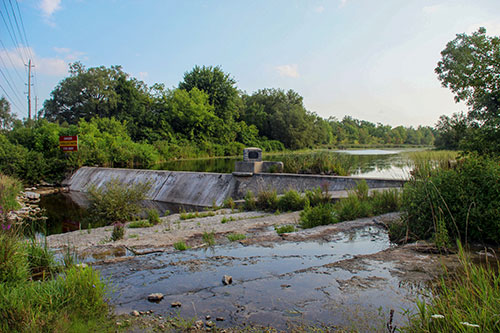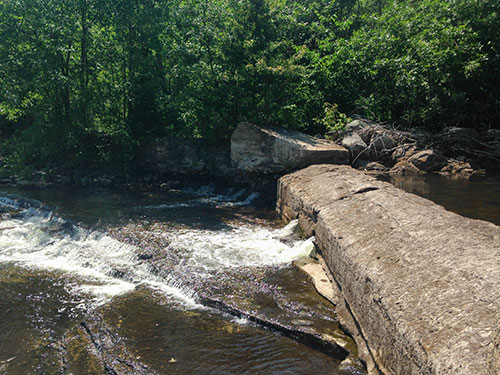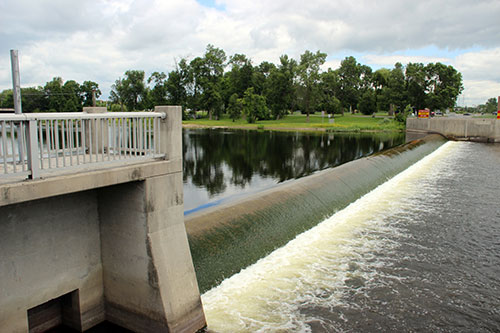We follow operating plans for each dam. The plans tell us when to operate based on time of year or water level. The plans also tell us how to operate. These plans consider all water users and the health of the lakes and rivers.
Many of our dams are only operated in the spring and fall. In the fall, water levels are lowered above the dam to reduce winter ice damage and spring flooding. After the snow has melted in the spring, we operate the dams to maintain higher summer water levels on lakes and to raise low river levels during droughts.
Our dams can be controlled by stop logs and panels, valves, or inflatable weirs. Some dams cannot be operated. These dams are referred to as weirs.
Weirs and dams that are only operated in the spring and fall are referred to as “run of the river” dams. This means that the dams do not change the flow in the river. All of the water that flows to the dam, flows over the dam, and continues downstream.


